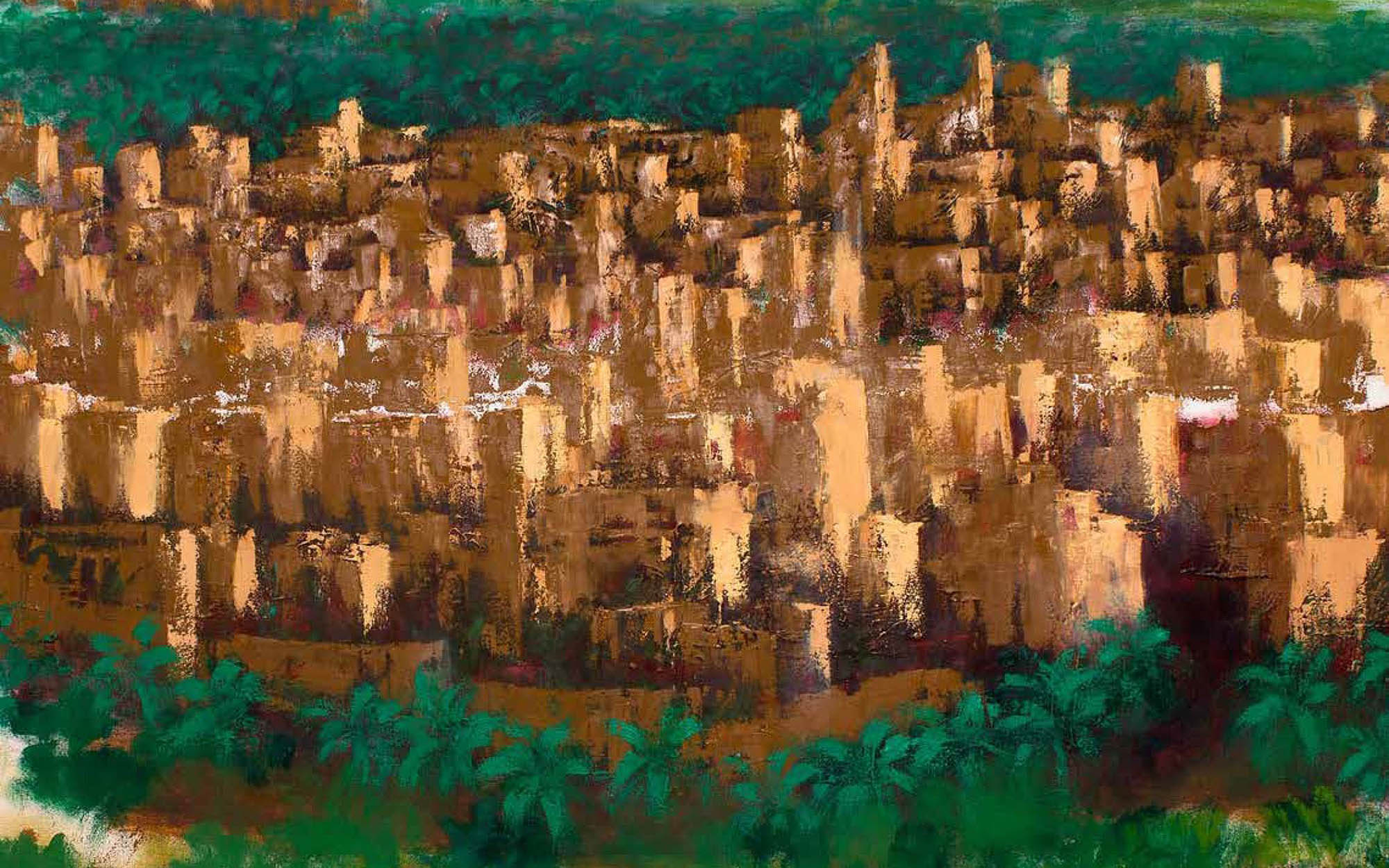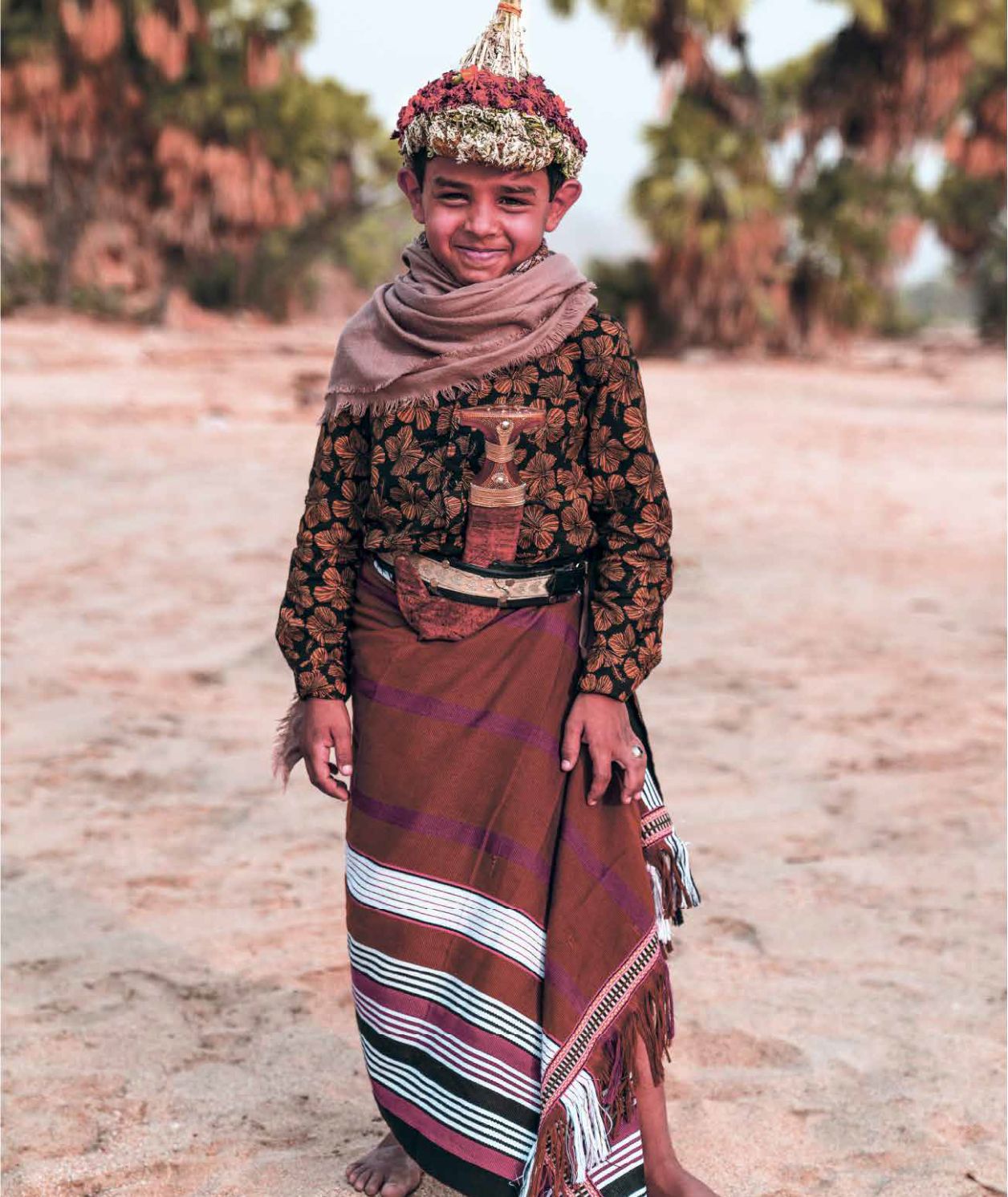Since the beginning of time, gardens have held a special place in our hearts. They are our vision of paradise and where we can find peace, wisdom, beauty and inspiration. Whether they are small or big, part of humble homes or famous palaces, in public parks or roundabouts, they bring life to a place, and leave lasting perfumed impressions.
They make an appearance in poems, philosophical impressions and ideas. They are nature’s artistic canvas, an endless expression of the boundless artistic skills of our mother nature. We pay homage to Gardens in this issue of Ithraeyat, for
a garden has brought many a sense of peace and purpose in the COVID-19 era of isolation and anxiety. We meet the bold and vibrant art of Saudi artist Nawal Musali, featured on the cover, that captures the lushness of gardens. This piece, is part of a collection of four colors, from ‘Rabou Beladi’ (across my country) series.
This piece is part of the “green” stage that captures the wealth of greenery of the south of Saudi Arabia, and its landscape. We hope you enjoy your stroll through our mini-gardens featured here, and those that may cross your path.

‘Window with a View,’ by Saudi artist Daniah Al-Saleh. Watercolor, Gouache and pencil diptych, 127 x 85 cm each, 2015. The piece is about the division in social class. Daniah used two typical views, one of rooftops and their haphazard TV dishes, while the other is of a garden. Each ‘View’ represents one social class. The higher one is on the social ladder, the better their view is. But people have more things in common than not. We focus on eye level pleasures, but forget to look up and see how we all share one sky, one heaven. The sky is represented symbolically by the seven heavens, seven divisions of different blues. The red triangles encourage the viewer to look up instead of downwards. Red being the color of all people, the color of blood. Art courtesy of the artist and Athr Gallery, Jeddah.
Saudi Arabia’s Al-Hasa Oasis has entered the Guinness World Records as the largest self-contained oasis in the world, with more than 2.5 million palm trees in the oasis, which is fed from a huge underground aquifer, which allows agriculture all year round in a region that is otherwise sand desert. The Al-Hasa Oasis has also been recognized as a UNESCO World Heritage site under the Cultural Heritage category. Saudi Arabia also launched this month the ‘Let’s Make it Green’ campaign to reduce desertification in the Kingdom and help develop natural habitats by planting 10
million trees by the end of April 2021.

Photo taken by Saudi photographer Abdullah Al-Sheikh.


